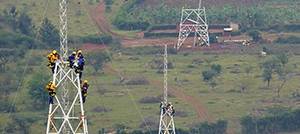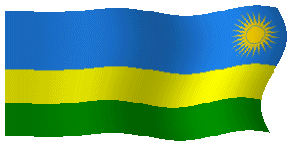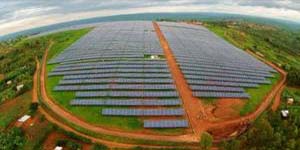Latest News
- Giants of Africa postpone youth festival in Kigali, Rwanda
- Rwandan coffee sells out in seconds at Electronic World Trade Platform livestream event in China
- Kigali maintains 2nd position in Africa on ICCA ranking
- Public-Private Partnership to boost Rwanda’s Tourism & Hospitality Industry
- PUBLIC NOTICE: Hirwa Mountain Gorilla Family returns to Volcanoes National Park
- Rwanda Celebrates Earth Day with Immersive Gorilla Trekking Virtual Reality Film
- Rwanda private sector readies for Commonwealth Business Forum
- Government of Rwanda, Babyl partner to provide digital healthcare to all Rwandans
- Rwanda, UAE enter partnership to improve nationwide Road Safety
- Rwanda courts more tourists at Middle East Travel Fair
- RWANDA RE-OPENS FOR TOURISM
- Rwanda wins bid to host 2020 Africa Tourism Leadership Forum
- Rwanda tourism marketing delegation in United States for New York Times Travel Show and Southern California Trade Events
- Mobile Employment Services reach Musanze District
- Qatar Takes Majority Stake in Rwanda’s New International Airport
- Entre le Rwanda et le Paris Saint-Germain, plus qu’un partenariat
- Rwanda na Paris Saint-Germain: Birenze Ubufatanye
- Audio-Visual industry stakeholders commit to partnerships in bid to grow sector
- Second annual audiovisual regional forum opens in Kigali
- Rwanda closer to becoming a regional logistics hub with the launch of Kigali Logistics Platform
- Start-ups to receive funding and training after completing incubation program at the ICT Innovation Centre
- Arsenal Star David Luiz Celebrates Memorable Visit to Rwanda
- Cherie Blair leads investment delegation to Rwanda
- Rwanda welcomes high-level Dubai business delegation
- Kayonza residents participate in Kwita Izina bicycle race
Power Transmission
Writerman 6:49 AM Energy
- Rwanda’s transmission network is of 3 main voltage levels; 70kV, 110kV and 220kV transmission infrastructure.
- By end of March 2017, some 744.7 km of High Voltage (HV) transmission lines had been laid, evacuating power from various points of generation across the country, as well as facilitating regional interconnectivity.
- Of the total network laid so far, 480.4 km (64.5%) are 110kV and 264.3 km (35.5%) are 220kV transmission lines.
- There are several opportunities in construction of power transmission & distribution lines, as well as power substations to reach the 52% grid connections by 2023/24 from the current 28.7%.

Biogas
- To date, 10,558 biogas digesters have been disseminated in households by 63 local companies. The installations costs are borne by the consumers (on their own revenues or credit from lenders) and the government (subsidy) on a 50/50 cost sharing principal.
- The subsidy is disbursed through the districts which have signed MoUs with local Credit giving institutions (SACCOS) to extend credit to the biogas project owners on request.
- Small-scale power generation using agricultural residues (such as bagasse or rice husks) or biomass briquettes (from compacted waste residues or charcoal dust) is feasible at low levels of capacity.
Biomass
- As of 2017, 67% of households use traditional stoves (with 79% using firewood and 12% using charcoal, and 0.8% of the households use modern cooking systems)
- It is targeted to have 16% of households using modern cooking systems by 2023/24. This will represent at least 50% of urban households and 5% for rural households (this means 513,698 extra households in total using modern cooking technologies by 2023:24).



